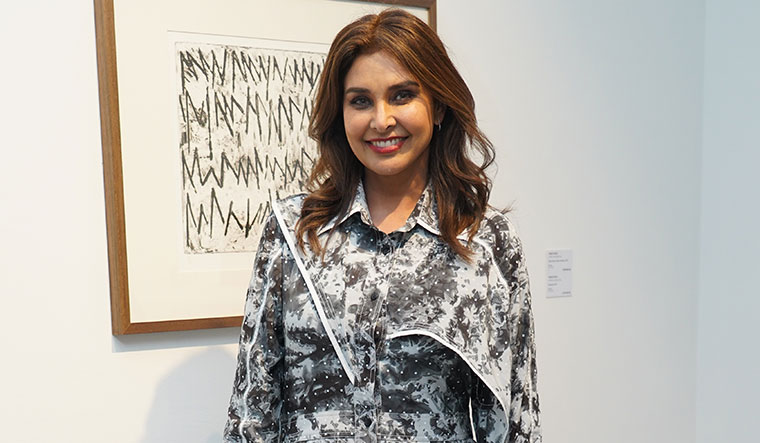TheUpsideSpace (TUS), a curator-led digital arts platform is Lisa Ray’s latest venture into the art space. TUS, she says, puts the spotlight on artists from Southeast Asia, South Asia and the Middle East via NFTs (digital art which is tokenised in the blockchain.) Through NFTs, she hopes to take the voices from the Global South to the mainstream. Excerpts from an interview:
Q/ You have been an actor, author, activist and now you have forayed into the art space.
A/ Art has always been a feature in my life. There is this assumption that if you are an actor, that is all that you can do. But that is so not true and I also wrote a book on it. I have always had many parallel interests and identities. The seed was sowed into me when I was very young; I spent my first paycheque on a Suhas Roy in Bombay in 1993 and have been into collecting contemporary Indian art for several years. I have never considered myself as an actor and don’t know why I am called one.
Q/ Why NFTs?
A/ If we are to make art accessible to everyone, NFTs come in because they dissolve all boundaries. So we created an online gallery―TUS, a curated platform. We work with strong curators with strong points of view from different regions, across South Asia, Southeast Asia, the Middle East, and the curators become the storytellers. So you gain access into a certain region of the world through the stories they tell and through the artists who are on board. Access should not be an obstacle for artists who want access to a global marketplace. We have been able to facilitate creating NFTs or helping with digital interventions with artists who are not tech savvy or who don’t have the particular skill-set. We will also partner with artists who work purely in the analogue world, who have a traditional studio practice. So we are facilitating an entry point for both, the artist and the audiences as well. For the audiences, we have made buying NFTs on our platform simple. We accept credit cards, fiat currency as well as crypto. We are an art platform and tech is the enabler.
Q/ How do you address plagiarism in NFTs?
A/ NFTs ensure authenticity more than any other protocol that we have. In fact, they ensure provenance of the work and ensure smart royalties. Today, even a traditional artwork can be easily duplicated. NFTs are watertight about the authenticity and ownership and it is all there for public consumption. So if you are talking about forgery in the manner of someone taking a screenshot then that can be done with anything and anywhere. NFTs are a disruptive new technology offering a new creative playground for artists.
Q/ What kind of an art collector have you been?
A/ Mainly contemporary Indian art, but I had also collected when I lived in Hong Kong and Singapore. Some of the recent artists I have collected are Sumakshi Singh, Rithika Merchant, Gunjan Gupta who works with turmeric, C. Bhagyanath and Jogen Chowdhury. I am very interested in younger artists such as Santanu Hazarika and Kunel Gaur.
Q/ What has changed in terms of art appreciation and collection in India?
A/ Younger generations coming to gallery spaces, engaging and becoming patrons of the art, is what has changed. In the 1990s it was a much older clientele.


